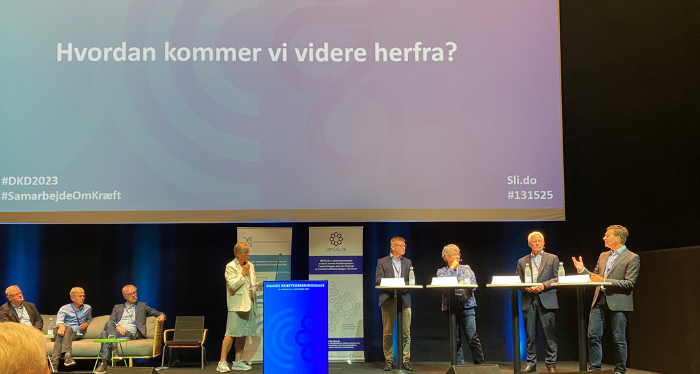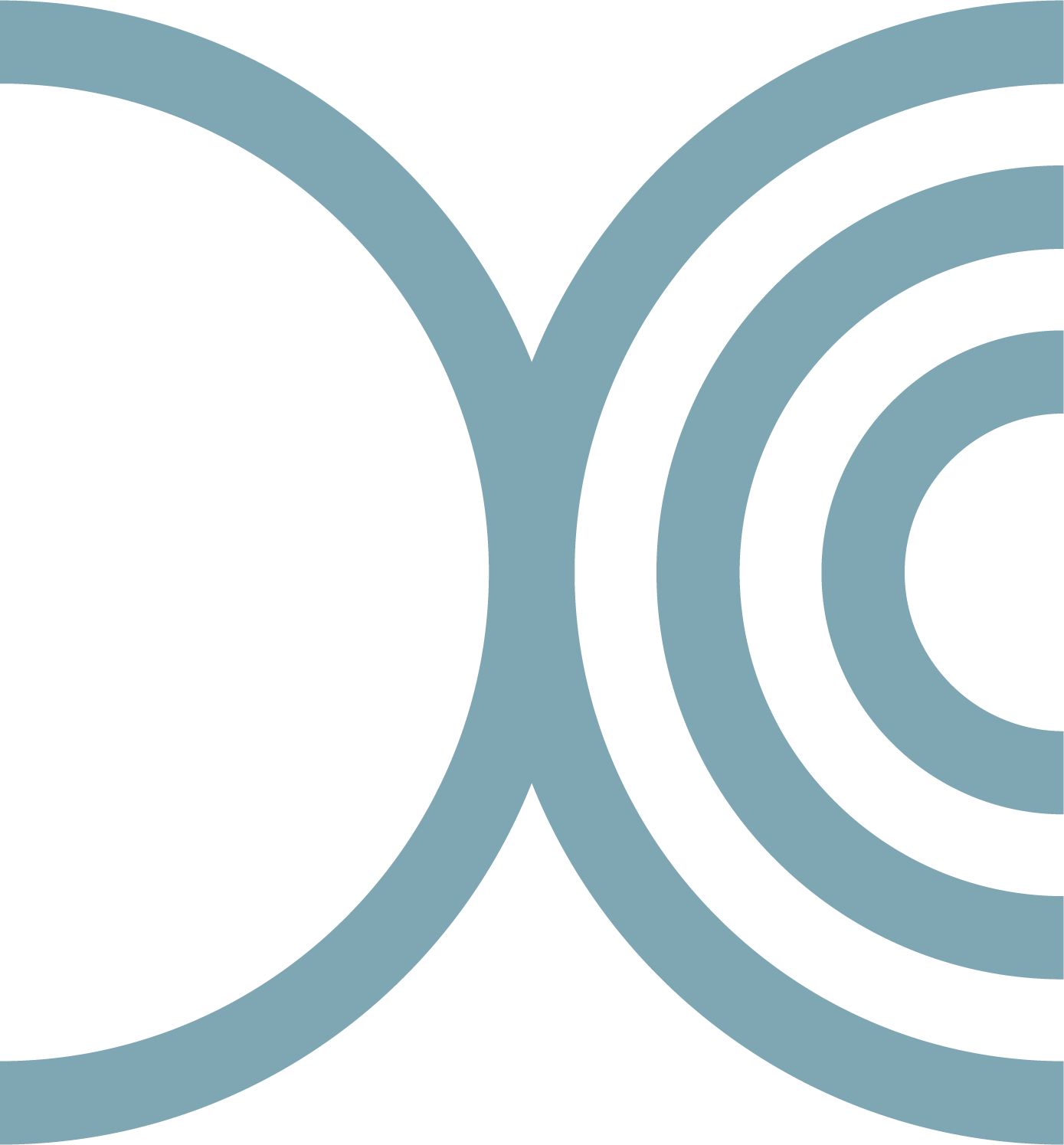
The 'follow-up and late effects'-session wrapped up with a panel discussion in which four participants discussed how the current knowledge in the field can benefit patients and citizens. Photo: DKD2023, DCCC.
29-09-2023
Big visions for the future and broad perspectives were in focus during the 'follow-up and late effects'-session at this year's Danish Cancer Research Days. The session showed the need for designing follow-up programs that are tailored to individual needs and conditions, just as it was clear we already have many tools to assist people living with late effects after cancer, we just need to implement them.
Today, a lot of people are being cured of cancer or living with cancer for years. Consequently, follow-up and late effects are becoming relevant for an increasing number of individuals. Therefore, this area potentially requires more resources and has historically been marked by limited or lacking evidence for both interventions initiated and their discontinuation. Hence, there were many reasons to prioritize a session on this particular topic at this years's Cancer Research Days.
It is a visison to make follow-up programs even more targeted and individualised. For this purpose, big data and AI may already support this shift with technology that facilitates it. We do not need small changes in operations but instead we need a clear vision of individual tailored programs and a common infrastructure that supports an evidence-based approach to follow-up and late effects in the future. This was the message form to the two session leaders, Henrik Frederiksen and Helle Poppot, as they opened the session 'Follow-up and Late Effects – Do you believe it works?' at the Danish Cancer Research Days 2023 on Friday, September 1, 2023.
During the session multiple presenstations and importants facts were brought from both researchers, patient representatives and decision-makers. This article aims to summarize some of the main points from the session.
Higher survival rate than the genereal population
The first part of the session focused on follow-up, and the first presenter on stage was Jakob Lauritsen, Consultant of the Department of Oncology at Rigshospitalet. On behalf of the Danish Testicular Cancer Group (DATECA), he provided insights into the current follow-up practices for men diagnosed with testicular cancer. And it was truly a success story: The survival rate for testicular cancer patients who have not received adjuvant treatment is now better than that of the general population."
- And here's my assertion: It is thanks to our follow-up program for testicular cancer, he stated.
He further explained that the follow-up is intensified during the first year after surgery, when relapses are most commonly observed. Furthermore, he mentioned that even when relapses occur, survival rates are high, even in cases of metastasis. This survival rates can be attributed, in part, to the fact that relapses are typically detected early as part of the follow-up program, he said.
Evidence-based ignorance
Next, Professor and Consultant Ole Mogensen took the stage to provide a presentation with the provocative title 'The Value of Follow-up in Gynecological Cancer – Evidence-Based Ignorance?'. The focus was on the potential of patient-centered and patient-initiated follow-up in the future.
Ole Mogensen's starting point goes back to 2009, where it was concluded that the then-existing Danish follow-up program did not improve the survival rates for gynecological cancer patients.
- It meant that we had to reconsider our approach. Both citizens and doctors had an expectation that follow-up would improve survival rates, but it did not. Hence, a paradigm shift was needed, explained Ole Mogensen.
This led to the formulation of a new vision: Future follow-up should be based on knowledge, tailored to individual needs and initiated by the patients themselves. This vision has since evolved into a research project, indicating that patient-initiated follow-up could be a relevant alternative to hospital-initiated follow-up.
Late effects are an important part of the 'Kræftplan V' (Danish Cancer Plan V)
The session then delved into the theme of 'late effects.' Chairman of the Danish Association for Late Effects after Cancer, Marianne Nord Hansen, shared a powerful personal story highlighting how patients with severe late effects can wait far too long to receive the necessary help. She then outlined the Danish Association for Late Effects after Cancer's vision as an optimal approach to addressing late effects.
- Evidence and organisation, those are two key words in the late eccefts initiative, she explained.
Following that, several speakers presented constructive ideas on how we can reduce the occurrence of late effects and how we, as a healthcare system and society, can address the late effects that still occur
The session wrapped up with a panel discussion featuring Erik Jylling (Executive medical officer, Capital Region Denmark), Jesper Frisker (CEO, Danish Cancer Society), Steen Dalsgård Jespersen (deputy director, Danish Health Authority), and Bolette Friderichsen (General Practitioner and Chairman of the Danish Society of General Medicine – DSAM). They discussed how the knowledge presented on stage can be used as a guidance in future follow-up and late effect initiatives in Denmark.
The four participants agreed that the currently available knowledge is valuable, but that we need to put this knowledge into practice to benefit patients and citizens.
- We have fundamental knowledge that can be used in practice, and I believe that we can propose a basic structure for the late effects initiative, which should be a crucial component of Cancer Plan V. However, we still need concrete methods to identify those who are particularly vulnerable and in need of assistance, said Jesper Fisker, CEO of the Danish Cancer Society, who participated in the discussion, and added:
- It is incredibly important. There cannot be a Cancer Plan V without late effect initiatives.
View all PowerPoint presentations from the session by clicking here (Danish)
